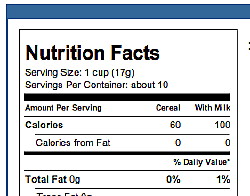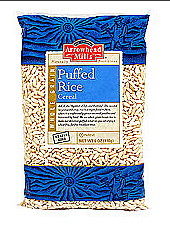CLARIFICATIONS/NOTES:
FORUM topics for Week 2: (These topics will be posted on Monday of Week 2:
|
|
As you're watching this lecture, be thinking about how you'll answer 2 questions on SQ 2/3- “Considering the visuals shown (meaning the pictures of the lecture, NOT the text of the lecture) during Lecture 2A: chapter 2 and also for Lecture 2B: chapter 3, what did you learn OR what did you see that you already knew? |
|
Chapter
2: Nutrition Standards & Guidelines
You'll be asked Study Questions about your lecture notes. Have your textbook beside you for this as you'll be asked about some tables in your book. First look through the major headings of this lecture: I My Pyramid (USDA Food Guide) II Daily Values (DV) (page Y in back of book) III (DRI) Dietary Reference Intakes (page a in front of book) IV Dietary Guidelines for Americans, 2005 (Ch. 1, p. 16 of 11th edition text, Ch. 2 p. 36 of 11th edition text ) V Beyond the nutrients of the twentieth century As you’re looking below at the nutrition standards & guidelines outline below, you’ll see they’re from a variety of government agencies. The following information will help you answer some of your Study Questions: I My Pyramid (government agency it’s from- USDA [U.S. Department of Agriculture])  The USDA in Washington D.C. is a HUGE building.... this is just the middle section.  Definition of MyPyramid- A visual representation and explanation of a daily food and activity guide. 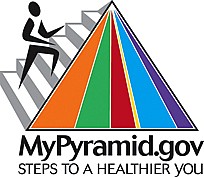 Above is what the Pyramid looks like now and below is what it looked like when it was first released in 1992. 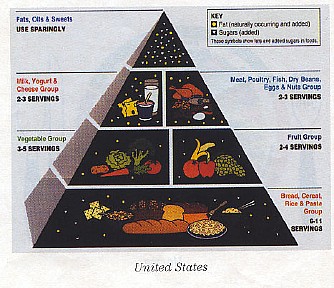 In both,
foods are grouped into 5 different groups, based on their nutrient
content.
There are
other food guides in other countries, some in pyramid shapes,
and some in other shapes:
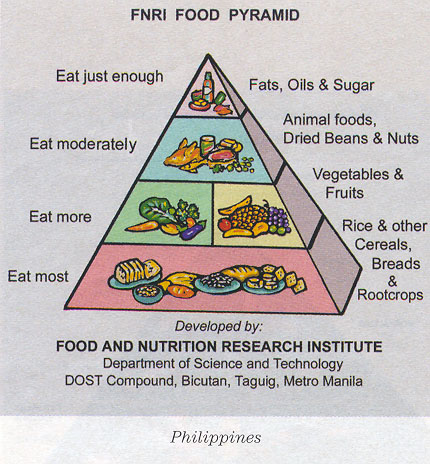 Philippines 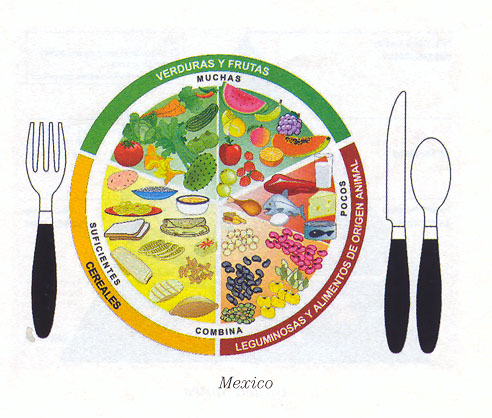 Mexico 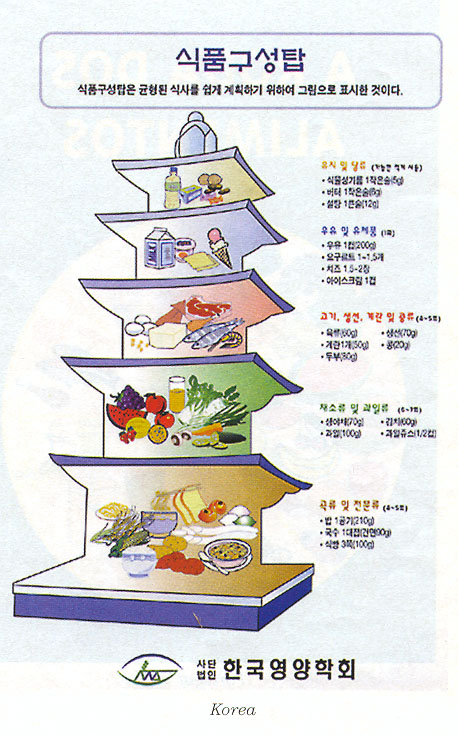 Korea |
The first U.S. Food Guide, shown below, was
released in 1917.  The short video clip below talks about it. |
| Food
Guide Video Clip (approximately 2-minutes) Viewing
the video clips works best with the following
browsers:
Safari if using a Mac
Explorer if using a Windows-based computer I didn't understand why, but Firefox does NOT work. |
| If an
approximately 2-minute movie isn't showing up
just above on
your
computer, you may
not have the latest version of QuickTime on your computer. Click here
to download the newest version of Quick Time. History of U.S. food grouping systems: about 1917- 5 groups WWII to 1955- Basic 7 1956 - 1992- Basic 4 1992- Food Guide Pyramid (not tested on these dates)
Below are the Basic Four Food Groups that I grew up with and
below that the Basic 7 that were still around when I was born in 1950.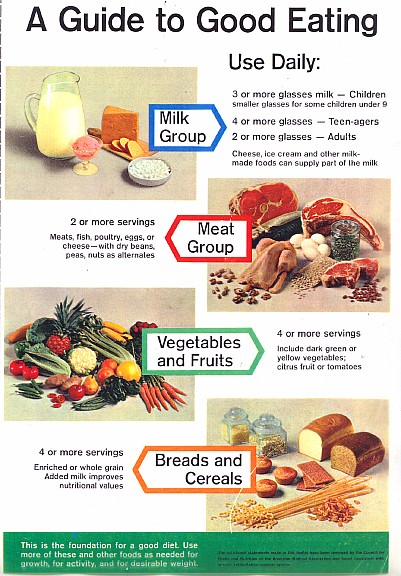 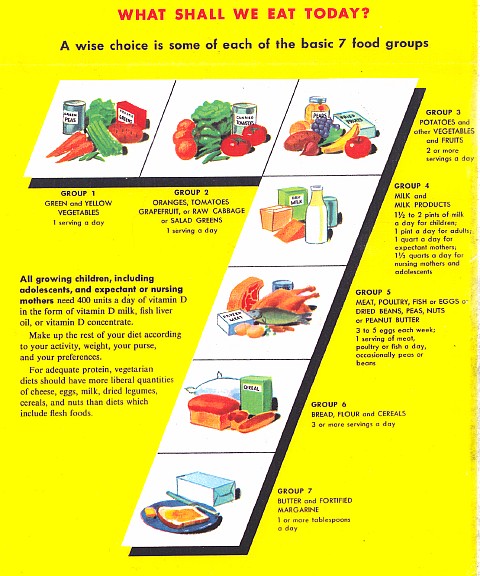  Remember that these are suggestions and each individual can decide what works for them. It usually doesn't improve a person's eating habits when someone else dictates how much to eat, whether it be a relative, friend, medical professional, educator or the government. How
Much Food to Eat from Each Group Daily
See TABLE 2-3 (10th edition and 11th edition) for other ages besides these two.
There are equivalents to these amounts listed in your text in
 (This was a photo I took in
one of the Washington D.C. Smithsonian museums in 2008. It looks
like the photographer was Victoria Snober and it's a Getty Images
photo. http://www.gettyimages.com/
|
|||||||||||||||||||||||||||
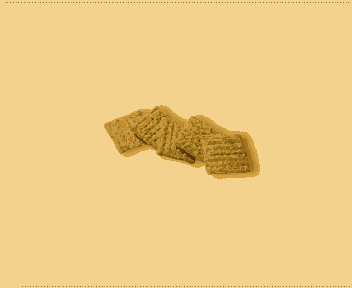 Keep in mind that an "ounce equivalent" is a small portion, like the one above. An ounce equivalent is something that weighs an ounce in its dry form, like an ounce of dry cereal or an ounce of dry rice or dry pasta or an ounce of bread or an ounce of a tortilla. The measurement of that ounce of dry weight varies. You can see in the above image that an ounce of triscuit crackers is about 5 of them. An ounce is equal to about 30 grams. Dry cereal usually gives the gram weight and the cup measurement.
There is now considerable "portion distortion" in what we think of a serving, as illustrated below. |
|||||||||||||||||||||||||||
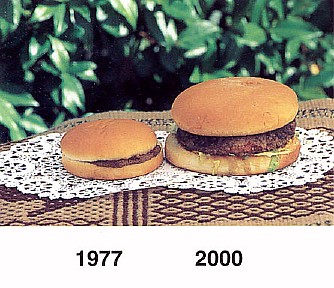 |
|||||||||||||||||||||||||||
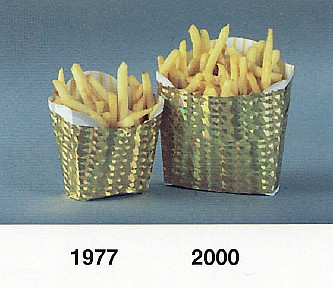 |
|||||||||||||||||||||||||||
 |
|||||||||||||||||||||||||||
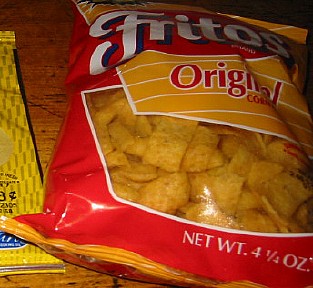 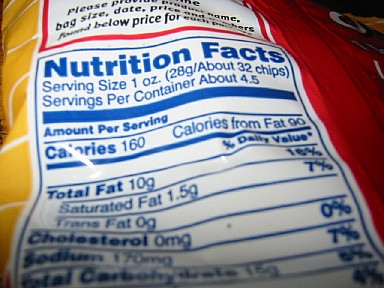 4 1/4 oz. Bag Fritos: 4.5 servings per container The Nutrition
Facts are given for 1
serving.
Do you see where the label says Calories 160 160 calories times 4.5 servings per container= 720 calories/bag |
|||||||||||||||||||||||||||
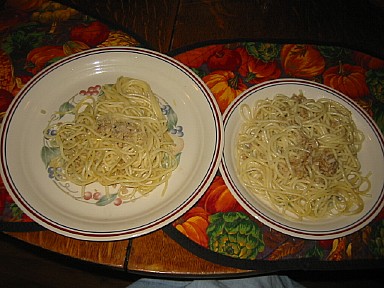 If you're
trying to cut down your portion sizes, one way to do it is to use
smaller plates. These are each one-cup portions of spaghetti.
Our text says that one ounce of grain is equivalent to 1/2 cup of pasta. So the one cup portion of noodles is two "ounce equivalents". |
|
II Daily Values (DV) (page Y in back of book) (government agency it’s from- FDA [U.S. Food & Drug Administration]) Definition- A set of suggested daily intakes of calories and selected nutrients, developed to use on food labels. They don't vary by age or gender; they are usually the highest RDA for that nutrient. Reflect the needs of an “average” person (someone eating 2,000 calories a day). Based on the 1968 RDA; are not updated on a regular basis. Look on page Y in back of book to fill these in. Iron DV ________________ Calcium DV ______________ Click here if page Y says the iron DV is 15 mg. Click here if page Y says the iron DV is 18 mg. Click here if page Y says the calcium DV is 800 mg. Click here if page Y says the calcium DV is 700 mg. 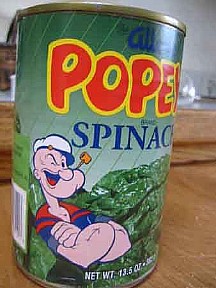 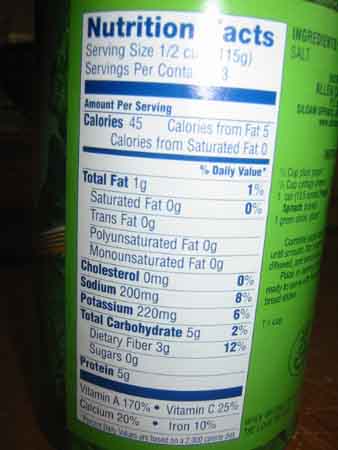 A DV on a food label lists what % of the DV a serving _ of the food supplies. MAGIC DV- we are going to say that the “magic” % Daily Value is 10%. In other words, we will consider a food a "good source" of a nutrient if the label says a serving of it has 10% or greater of the DV(Daily Value) for that nutrient. Using this definition and looking at the spinach label above , what nutrients should we consider the spinach a "good source" of? Click
here if,
using this definition, we should consider this spinach a "good source"
of Sodium.
Click here if, using this definition, we should consider this spinach a "good source" of Total Carbohydrate. Click here if, using this definition, we should consider this spinach a "good source" of Dietary Fiber. Click here if, using this definition, we should consider this spinach a "good source" of Vitamin A. Click here if, using this definition, we should consider this spinach a "good source" of Vitamin C. Click here if, using this definition, we should consider this spinach a "good source" of Calcium. Click here if, using this definition, we should consider this spinach a "good source" of Iron. |
|
III (DRI) Dietary Reference Intakes (page A in front of book) (government agency it’s from- Institute of Medicine of National Academy of Sciences)  National Academy of Sciences in Washington D.C   Beside the
building is a Robert Berks sculpture of Albert
Einstein.
After a visit to the nearby Lincoln Memorial, people love to take a
break with Einstein.
  Like other
Washington D.C. buildings of the early part of the twentieth century,
the outside isn't a good indication of the beauty of the inside.
Returning to the Chapter 2
Lecture Outline in the packet....
Definition of the Dietary Reference Intakes (DRI): Nutrient intake standards set for people living in the United States and Canada. Three of the possible values the DRI sets for nutrients: To fill these in, look below at A. , B. and C. A.
(RDA) Recommended Dietary Allowances
B. ____________________ C. ____________________ A. (RDA)
Recommended Dietary Allowances
Definition: A set of suggested daily intakes of calories and selected nutrients, which vary depending on age and gender. When RDAs are set for a nutrient they are based on solid experimental evidence and they are updated every five to ten years by a panel of nutrition experts. are based on solid experimental evidence, updated every five to ten years by a panel of nutrition experts. They are intended for healthy individuals, not for those with serious illness or malnutrition. Now look at page A and B in the front of our text. What does it say is the IRON RDA for 32-year-old female? Click
here if you think it says 8 mg of iron is
the RDA for a 32-year-old female.
Click here if you think it says 15 mg of iron is the RDA for a 32-year-old female. Click here if you think it says 18 mg of iron is the RDA for a 32-year-old female. What does it say is the CALCIUM RDA for 32-year-old female? Click
here if you think it says 1000 mg of calcium
is the RDA for a 32-year-old female.
Click here if you think it says 1200 mg of calcium is the RDA for a 32-year-old female. Click here if you think it says 1300 mg of calcium is the RDA for a 32-year-old female. Setting RDA Values Nutrients-
set so that they will meet the requirements of nearly all
people.
Energy- set at the average so that half of the populations' needs will fall below and half will fall above the recommended level. |
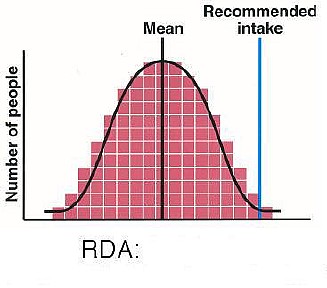 |
 |
| Above is how the RDA for nutrients (iron, for example) is set. | Above is how the RDA for energy (calories) is set. |
|
The RDA for NUTRIENTS (like
protein, vitamins, and minerals) is NOT
set at the average requirement, but instead at a level HIGHER than the
average. this is so that almost everyone's need are met if they
consume the RDA for a nutrient like iron.
The RDA for ENERGY (CALORIES) is set at the average requirement. If someone actually requires a level of calories higher than their RDA, it's very likely that they'll eat more than their RDA for calories. If my RDA for calories was set so that it covered almost everyone, I'd be happy to eat that extra pint of ice cream every day. That would definitely not be he best thing for my overall health. Give 2 reasons why consuming less than the RDA for a nutrient for one day does not mean you're deficient in that nutrient. One reason is that you might
consume
more than you need the next day. Another reason is that the
RDA
might a level that's higher than what you happen to need.
B.
(AI) Adequate Intakes
Definition: These are
suggested
daily
intake levels of calories and selected nutrients when there is not
enough information to determine an RDA.
These are as scientifically based as possible, but they also involves educated guesses. Now look again at page A and B in the front of our text. What is the IRON AI for 32-year-old female? Click
here if you think it says 18 mg of iron is
the AI for a 32-year-old female.
What is the CALCIUM AI 32-year-old female? Click
here if you think it says 1000 mg of calcium
is the AI for a 32-year-old female.
C.
(UL) Upper Intake Levels (page C in
front of text)
Definition: A standard
that
identifies potentially hazardous levels of nutrient intake.
Not all nutrients have an UL due to insufficient data. Being aware of ULs (Upper Intake Levels) is important for people who take supplements. Look at page C in the front of our text. What does it say is the IRON UL for a 32-year-old female? Click
here if you think it says 100 mg of iron is the IRON UL
for a 32-year-old female.
What does it say is the CALCIUM UL
for a 32-year-old female?Click
here if you think it says 1000 mg of calcium
is the CALCIUM UL for a 32-year-old female.
Click here if you think it says 2500 mg of calcium is the CALCIUM UL for a 32-year-old female. Click here if you think it says 5000 mg of calcium is the CALCIUM UL for a 32-year-old female. Click here if you think it says 6000 mg of calcium is the CALCIUM UL for a 32-year-old female. This lecture has introduced you to some of the various types of nutrient intake values that make up the DRIs (Dietary Reference Intakes). I suspect you've already heard of the RDAs, but they are just one type of the nutrient intake values that make up the DRIs. The AIs and the ULs are the other two discussed here. REVIEW Describe two differences between the RDAs and the DVs.
|
|
IV Dietary Guidelines for Americans, 2005 (page 16 of text 10th edition; 11th edition, p. 36) (government agency it’s from- USDA [U.S. Department of Agriculture])
|
| V
Beyond the
nutrients of the twentieth century A.
Phytochemicals.
Definition-
chemicals that plants make to help them survive and get ready to
reproduce. Phytochemicals help them do that by helping
Lycopene is an example of a
phytochemical and food companies are anxious to use them to market
their products.
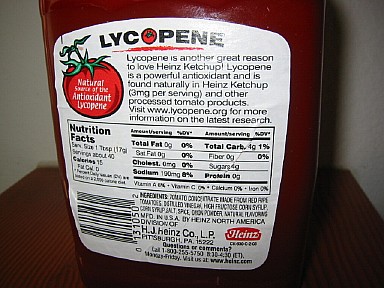 It is estimated that there
may be more than 100 different
phytochemicals in just one serving of vegetables.
In her book, Animal, Vegetable, Miracle: A Year of Food Life, Barbara Kingsolver says that a head of broccoli contains more than a thousand phytochemicals. (page 60) Some companies selling
supplements imply theirs is better than others because it has "whole
food". Nutrition Action,
in December 2007, said that once dehydrated, a serving of fruit or
vegetable (1/2 cup broccoli, for example) would fill some 15 capsules.
("Juice Plus Commission")
B. Zoochemicals are the same thing in animals. C. Probiotics- defined in Controversy 2 as "consumable products containing live microorganisms in sufficient numbers to alter the bacterial colonies of the body in ways believed to benefit health". Probiotics can be bacteria or yeast, although the vast majority are bacteria. An example of a food which has probiotics is yogurt, in which a bacteria culture is used to turn liquid milk into something with a tangy taste and a more solid consistency. 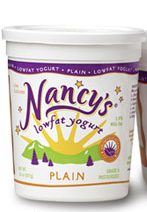  The bacterial cultures in this Nancy's product are: Lactobacillus acidophilus,
L. thermophilus, L. bulgaricus, L. casei, L. rhamnosus and B. bifidum. (Nancy's Yogurt began making yogurt in Springfield in about 1970.) A prebiotic (as opposed to a probiotic) is a substance that may not be digestible by the host, such as fiber, but serves as food for probiotic bacteria and thus promotes their growth. More about these in chapter 4. D. Nutraceuticals- (term first used in 1989)- a term that motivates
companies to divide food into individual chemicals that may have
medical or health benefits, including the prevention and treatment of
disease. These nutraceuticals are then sold at a much
greater profit
than what a farmer makes when selling a whole food.
Example: Benecol margarine
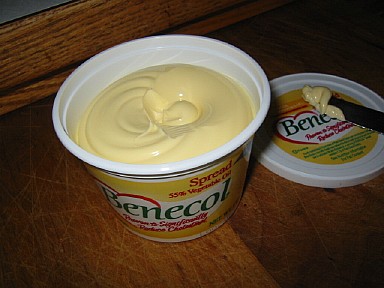  The label says that “Plant
stanol esters, the unique ingredient found only in
Benecol products, are derived from natural plant components found in
vegetable oils such as soy.
….its proven ability to lower cholesterol is supported by over 25 studies, including one reported in the New England Journal of Medicine.” I purchased this 1-cup tub of margarine so I could take a photo of it. I eat butter because I love it's flavor and I'm very satisfied with just a little of it at a time. So I gave this tub to a friend who uses margarine. They returned it because they didn't like it. Look at the price for this this 1-cup tub (2006). 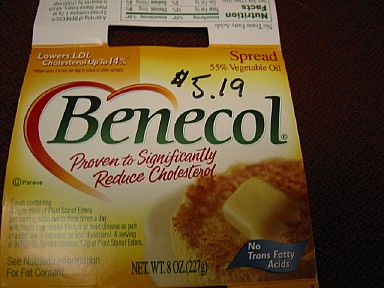 The Benecol implies that their plant stanols come from vegetable oils like soy, saying that they "are derived from natural plant components found in vegetable oils such as soy." Plant stanols are also found in wood pulp. E. The
best way to get phytochemicals is by choosing a variety of whole plant
foods, such as fruits and vegetables and whole grains. I can't
remember where I read or heard Michael Pollan (a
contributing writer to the New York
Times Magazine and a
professor of journalism at the University of California, Berkeley)
talking about this. He said that for quite a while we've
been encouraged by companies to buy their
"meal in a pill".
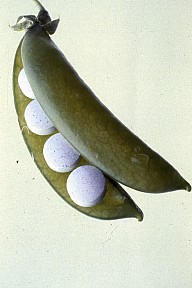 "pill in a meal".
The end of Lecture 2A |

